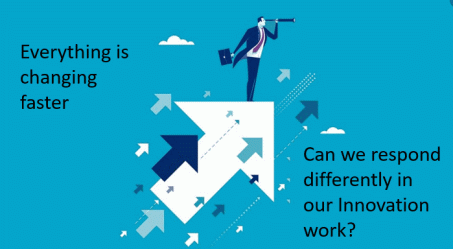
I am working with Jeffrey Phillips, a long-term collaborator on “all things concerning innovation.” We have just had our third short conversation of a five-part series on Innovation Governance.
This specific conversation is all about the fit of innovation governance within our Executive Innovation Work Mat. This is the link on Innovation Governance to the conversation, just under 14 minutes to listen to. Hope it gives a different set of insights to this area of innovation alignment.
If you would like to listen to the two previous conversations then these are here in the links that take you to youtube.com The first was setting the scene for these conversations on the “fundamental building blocks for innovation success” (LINK) and then the second into “the essential alignment of innovation to strategy” (LINK).
I have written supporting posts to these conversations, more to flesh out a number of different pointers to add more value and awareness of the importance of having a clear integrated solution for innovation in the solution we offer, the Executive Innovation Work Mat. Continue reading “Why we should focus on Innovation Governance”








